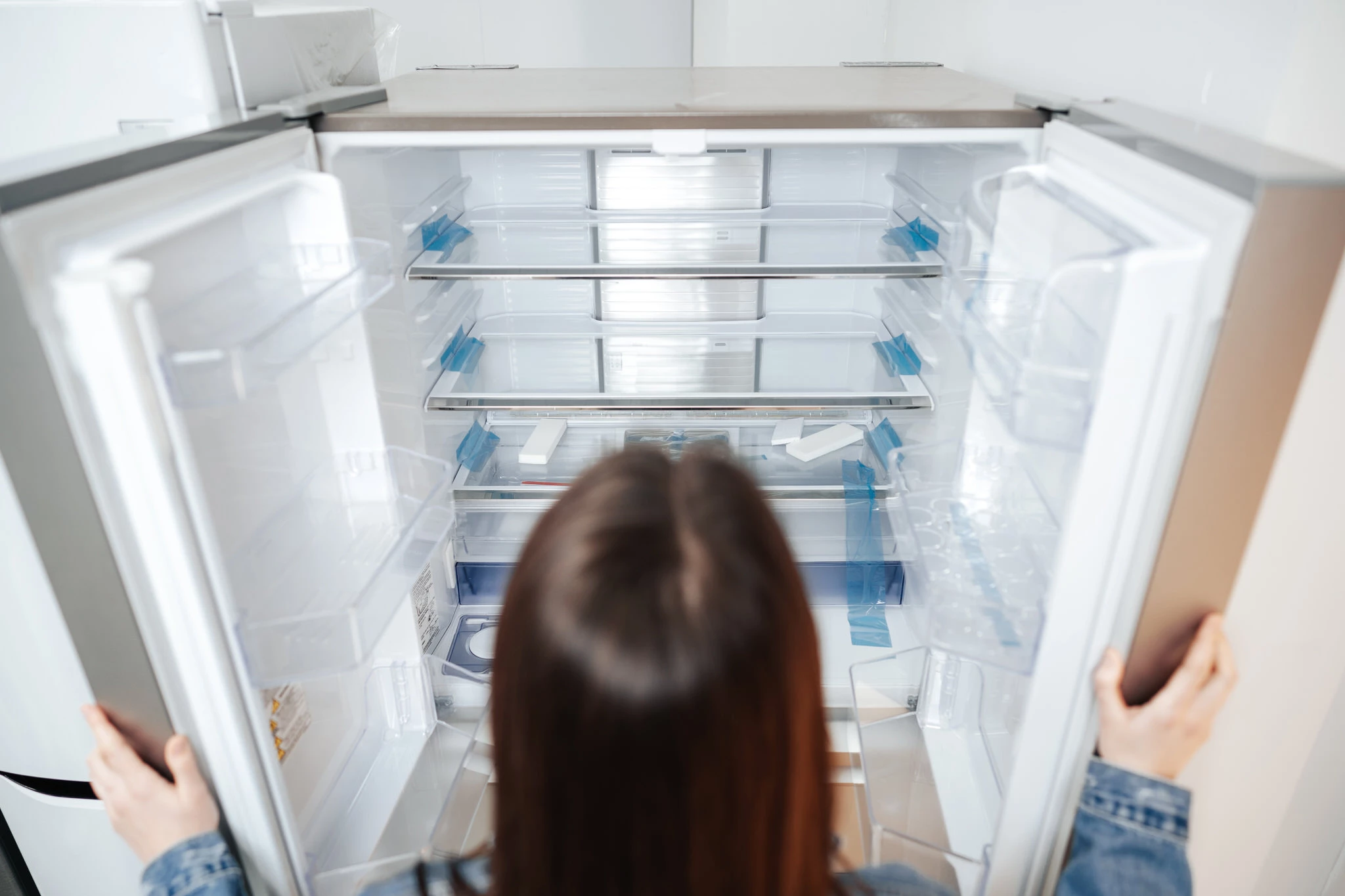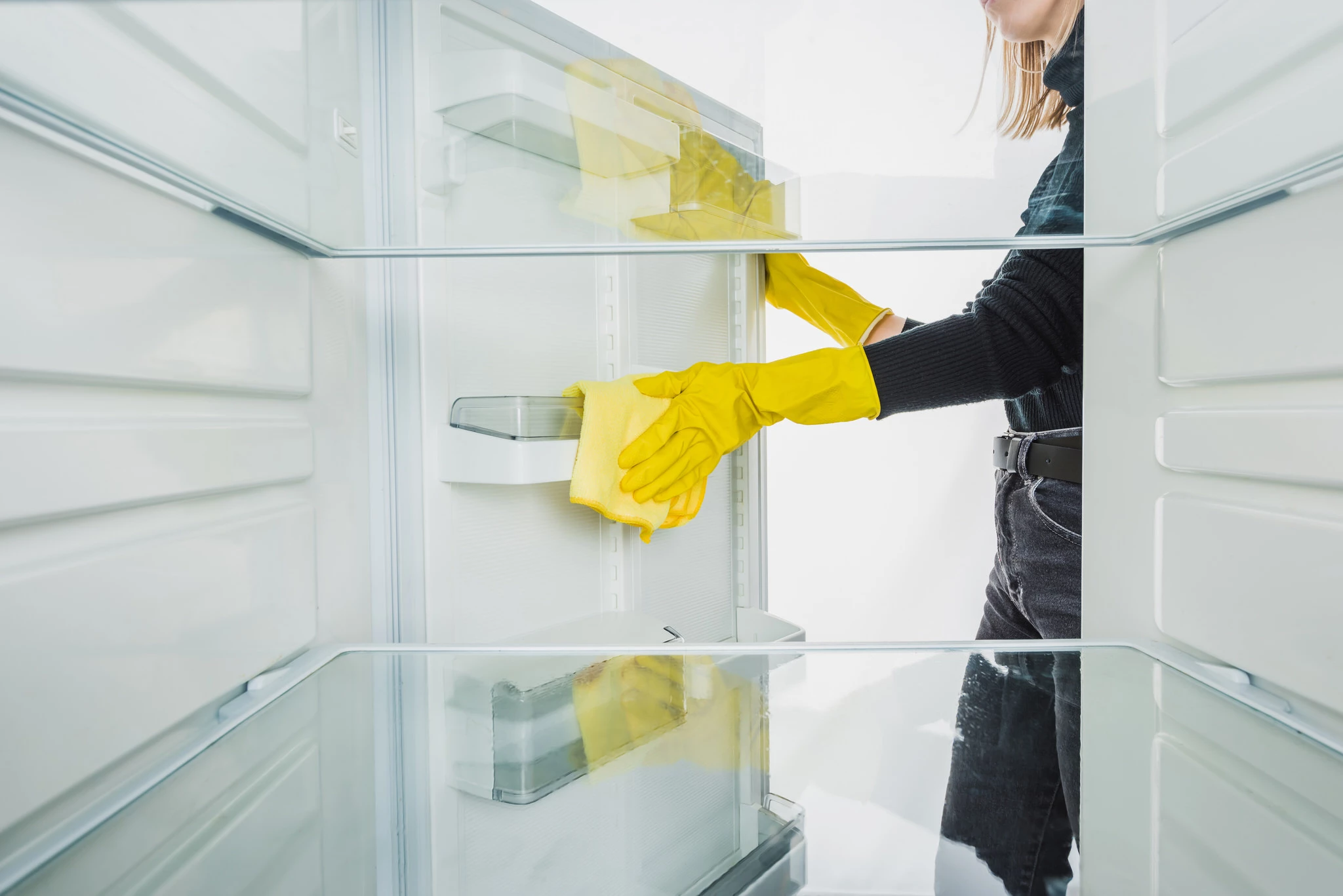When packing for a house move, few things are as awkward as a fridge freezer. Heavy, tall, and filled with delicate parts, it is not something you can wheel out the door. A careless tilt or a bit of leftover ice can cause leaks, bad smells, or even compressor damage.
In this guide, you will learn the correct way to prepare, protect, and transport your fridge-freezer safely, with tips drawn from the experience of professional London movers.
Understanding why fridge freezers need special care
Unlike most furniture, a fridge is a sealed cooling system that contains compressor oil and refrigerant gas. Moving it incorrectly, especially laying it flat, can lead to long-term mechanical problems. These appliances also retain moisture, which can leak during the move if not properly defrosted. Understanding these risks helps you plan the process step by step and avoid costly damage.
Key things to prepare before moving day
Defrost at least a day in advance
Switch off your fridge freezer 12 to 24 hours before the move. This gives any ice time to melt and prevents water from dripping inside the van. Place towels underneath to absorb moisture.
Empty food and remove loose parts.
Remove all food and throw away anything that will not last. Remove trays, shelves, and drawers, as they can crack or slide during transit.
Clean and dry thoroughly.
Wipe all interior surfaces with mild detergent or a mix of warm water and baking soda. Leave the doors open for several hours to let the appliance dry completely and prevent mildew.
Measure doorways and stairwells.
Fridge freezers are bulky. Measure every hallway, lift, and doorway along the route to ensure smooth access, particularly in London flats with narrow corridors or staircases.
Gather moving materials
Have strong blankets, stretch wrap, corner protectors, and a sturdy appliance dolly or sack truck ready. Never attempt to move one on your own.

Step-by-step guide to moving a fridge-freezer
Step 1: Secure the power lead. Unplug and coil the cable neatly, then tape it to the back of the appliance so it will not snag while moving.
Step 2: Protect shelves and drawers. Wrap shelves, trays, and drawers separately in bubble wrap or thick paper. If you are short on boxes, you can use the drawers to carry lightweight, soft items, adding padding inside.
Step 3: Wrap and protect the exterior. Cover the appliance with a moving blanket or thick plastic wrap. Secure it with straps, not sticky tape, as sticky tape can damage the surface finish.
Step 4: Prepare for lifting. If you need to move the fridge across tiles or wood floors, place furniture sliders or thick cardboard under the feet to protect the surface.
Step 5: Use the dolly correctly. Tilt the fridge slightly and slide the dolly under the rear. Strap it firmly and make sure the weight is centred before rolling. Keep the appliance upright at all times and avoid sharp tilts.
Step 6: Navigate doorways and stairs carefully. Have one person guiding from the front and another steadying from behind. Take each step slowly, using controlled movements rather than lifting by force.
Step 7: Load into the van upright. Once inside the vehicle, place the fridge-freezer against a wall and strap it securely so it cannot shift during transport. Keep it standing vertically throughout the journey.
Step 8: Wait before turning it back on. After you reach your new home, leave the fridge-freezer unplugged for at least 2 to 3 hours, or longer if it was tilted. This allows internal oil to settle before use.

Common mistakes to avoid
Even careful movers can make minor errors that lead to big problems. Avoid the following:
- Moving the fridge while it is still full of food.
- Forgetting to defrost in advance.
- Using adhesive tape directly on the exterior.
- Tilting or laying the appliance flat.
- Plug it in immediately after delivery.
- Attempting to lift it alone without the right equipment.
Take your time and plan. Rushing usually leads to damage or injury.
Benefits of professional moving assistance
A professional removals team can make this heavy, awkward task safe and straightforward. Trained movers have the proper lifting straps, trolleys, and protective materials to handle large appliances without risk. In London, many homes involve tight staircases, limited parking, and timed access windows, challenges that experienced movers navigate daily. Hiring professionals reduces strain, speeds up the process, and keeps your appliance in good condition.
The London angle, access, parking, and permits
Transporting large appliances in London often means planning around restricted parking bays, narrow streets, and resident-only zones. If a removal van needs to stop outside your home, you may need a temporary parking suspension or dispensation from your local council.
Check the requirements in your borough using our parking suspension and dispensation guide.
Arranging this in advance avoids fines and last-minute stress.
Pre-move checklist
- Empty and defrost the appliance at least 12 hours before moving.
- Clean and dry every surface thoroughly.
- Remove and wrap shelves and drawers.
- Coil and tape the power cord to the rear.
- Wrap the exterior with a moving blanket and add corner protection.
- Use a dolly, keep it upright during lifting and transport.
- Wait several hours before plugging it in again.
Conclusion
Moving a fridge-freezer safely comes down to preparation, teamwork, and patience. By defrosting early, keeping it upright, and properly securing it, you will avoid leaks, damage, and unnecessary repairs.
If you are planning a move in or around London, you can rely on Best London Removals Ltd to handle every detail, from packing and lifting to safe transport and reinstallation. Request a free, no-obligation quote today and let our experienced team handle the heavy lifting.
FAQs how to move fridge
Find quick answers to common questions about how to safely move a fridge-freezer
How long should I wait before turning my fridge-freezer back on?
Wait at least two to three hours after moving it upright, or up to 24 hours if it was tilted during the journey. This gives the compressor oil time to settle.
Can I move a fridge-freezer on its side?
Only if necessary and for a short distance. If that cannot be avoided, keep it on the side recommended by the manufacturer, then return it to an upright position as soon as possible and allow additional standing time before switching on.
Do I need to defrost a fridge freezer before moving?
Yes. Even short journeys can cause melted ice to leak and damage other items in the van. Always defrost at least a day in advance and dry the interior thoroughly.
How can I move it downstairs safely?
Use a trolley with straps and at least two helpers. Keep the appliance slightly tilted back but vertical, and take one step at a time with controlled movements.
Can professionals help with disconnecting appliances?
Yes. Removal specialists such as Best London Removals Ltd can disconnect, protect, and transport kitchen appliances (fridge-freezers, washing machines) safely and efficiently as part of a moving service.



